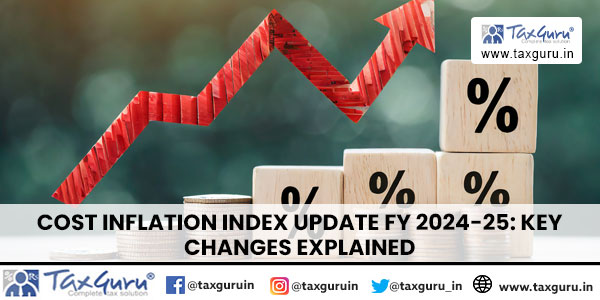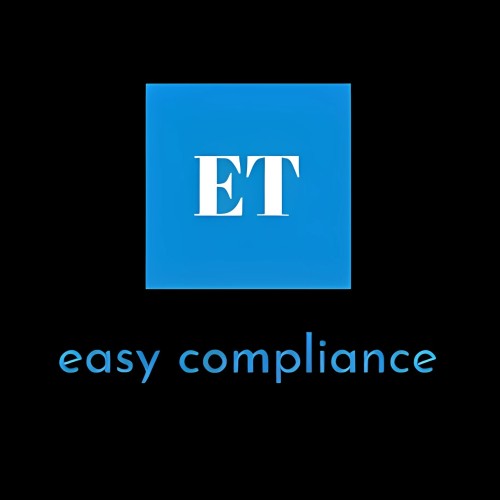The government has abolished the indexation benefit on long-term capital gains effective July 23, 2024, impacting taxation of such assets. Under the new rules, taxpayers can no longer adjust the purchase price of investments for inflation when calculating capital gains, leading to higher taxable amounts. For land or buildings acquired before this date, taxpayers may opt for a 12.5% tax rate without indexation or 20% with indexation. For properties purchased on or after July 23, 2024, the 12.5% rate applies without indexation, provided the assets qualify as long-term. The Cost Inflation Index (CII), used for adjusting long-term capital asset costs, has been crucial in reducing taxable profits by accounting for inflation. Long-term assets recorded at cost prices often reflect significant taxable gains upon sale due to inflationary effects. The base year for CII was shifted from 1981 to 2001 to simplify valuations for older properties. Indexed cost adjustments have traditionally lowered tax liabilities, but with indexation removal, this benefit is no longer available for debt funds from April 2023 and for all assets starting July 23, 2024. However, land and buildings transferred before this date retain optional tax benefits. The CII value for FY 2024-25 is 363, continuing its role in linking asset prices with inflation trends for historical transactions.
Page Contents
- Budget 2024 Update
- What is Cost Inflation Index?
- Cost Inflation Index Table from FY 2001-02 to FY 2024-25
- How is Cost Inflation Index used in Income Tax?
- What is the Concept of the Base Year in Cost Inflation Index?
- Why is the Base Year of Cost Inflation Index Changed to 2001 from 1981?
- Why is Cost Inflation Index Calculated?
- Who Notifies the Cost Inflation Index?
- How is Indexation Benefit Applied to Long-term Capital Assets?
- Important points to consider
Budget 2024 Update
As of July 23, 2024, the government has discontinued the indexation benefit on long-term capital gains. This means that investors can no longer adjust the purchase price of their investments for inflation when calculating capital gains for tax purposes. Consequently, long-term capital gains will be computed based on the actual purchase price, potentially resulting in higher taxable gains and, therefore, a higher tax liability for investors. However, in case of transfer of land or building acquired before July 23, 2024, taxpayers have the option to pay tax at either a rate of 12.5% without indexation benefits or 20% with indexation benefits. However, on land or building purchased on or after 23rd July, 2024, the tax rate will be 12.5% without indexation benefit, applicable to assets qualified as long term.

What is Cost Inflation Index?
A Cost Inflation Index table is used to calculate the long-term capital gains from a capital asset transfer or sale. The profit earned through the sale or transfer of any capital asset, such as land, property, stocks, shares, trademarks, patents, and so on, is referred to as capital gain.
Long-term capital assets are typically documented in books at their cost price. As a result, despite growing asset prices, these capital assets cannot be revalued.
When these assets are sold, the profit or gain obtained from them remains high due to their high sale price in relation to their acquisition price. As a result, assessees must pay a greater income tax on these assets’ gains.
In the long run, the application of the Cost Inflation Index for capital gain adjusts the purchase price of assets based on their sale price, resulting in smaller earnings and a lower tax amount.
Cost Inflation Index Table from FY 2001-02 to FY 2024-25
| Financial Year | Cost Inflation Index (CII) |
| 2001-02 (Base year) | 100 |
| 2002-03 | 105 |
| 2003-04 | 109 |
| 2004-05 | 113 |
| 2005-06 | 117 |
| 2006-07 | 122 |
| 2007-08 | 129 |
| 2008-09 | 137 |
| 2009-10 | 148 |
| 2010-11 | 167 |
| 2011-12 | 184 |
| 2012-13 | 200 |
| 2013-14 | 220 |
| 2014-15 | 240 |
| 2015-16 | 254 |
| 2016-17 | 264 |
| 2017-18 | 272 |
| 2018-19 | 280 |
| 2019-20 | 289 |
| 2020-21 | 301 |
| 2021-22 | 317 |
| 2022-23 | 331 |
| 2023-24 | 348 |
| 2024-25 | 363 |
How is Cost Inflation Index used in Income Tax?
Long term capital assets are recorded at cost price in books. Despite increasing inflation, they exist at the cost price and cannot be revalued. When these assets are sold, the profit amount remains high due to the higher sale price as compared to the purchase price. This also leads to a higher income tax.
The cost inflation index is applied to the long-term capital assets, due to which purchase cost increases, resulting in lesser profits and lesser taxes to benefit taxpayers. To benefit the taxpayers, the cost inflation index benefit is applied to the long-term capital assets, due to which purchase cost increases, resulting in lesser profits and lesser taxes.
What is the Concept of the Base Year in Cost Inflation Index?
The base year is the first year of the cost inflation index and has an index value of 100. The index of all other years is compared to the base year to see the increase in inflation percentage. For any capital asset purchased before the base year of the cost inflation index, taxpayers can take the purchase price higher of the “actual cost or Fair Market Value (FMV) as on the 1st day of the base year. Indexation benefit is applied to the purchase price so calculated. FMV is based on the valuation report of a registered valuer.
Why is the Base Year of Cost Inflation Index Changed to 2001 from 1981?
Initially, 1981-82 was considered as the base year. But, taxpayers were facing hardships in getting the properties valued which were purchased before 1st April 1981. Tax authorities were also finding it difficult to rely on the valuation reports. Hence, the government decided to shift the base year to 2001 so that valuations can be done quickly and accurately.
So, for a capital asset purchased before 1st April 2001, taxpayers can take higher of actual cost or FMV as on 1st April 2001 as the purchase price and avail benefit of indexation. You can read the detailed benefits of the change in the base year hear.
Why is Cost Inflation Index Calculated?
The Cost Inflation Index is calculated to match the prices to the inflation rate. In simple words, an increase in the inflation rate over time will lead to a rise in prices.
Who Notifies the Cost Inflation Index?
The Central Government specifies the cost inflation index by notifying in the official gazette.
Cost Inflation Index = 75% of the average rise in the Consumer Price Index* (urban) for the immediately preceding year.
*Consumer Price Index compares the current price of a basket of goods and services (which represent the economy) with the cost of the same basket of goods and services in the previous year to calculate the increase in prices.
How is Indexation Benefit Applied to Long-term Capital Assets?
When the indexation benefit is applied to “Cost of Acquisition” (purchase price) of the capital asset, it becomes “Indexed Cost of Acquisition”.
Important points to consider
- In case of property received in the will, CII has to be taken for the year in which the property was purchased by the previous owner.
- Ignore the improvement cost incurred before 1st April 2001.
- Index benefit is not allowed in the case of bonds or debentures except capital indexation bonds or sovereign gold bonds issued by RBI.
- Starting 1st April 2023, indexation benefit is not available for Debt Funds.
- Starting 23rd July 2024, indexation benefit is not available for any asset. However, in case of transfer of land or building acquired before July 23, 2024, taxpayers have the option to pay tax at either a rate of 12.5% without indexation benefits or 20% with indexation benefits. However, on land or building purchased on or after 23rd July, 2024, the tax rate will be 12.5% without indexation benefit, applicable to assets qualified as long term.





